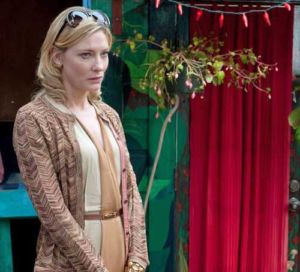More human than the humans
Few film franchises have been rebooted as successfully as the Planet of the Apes. When Rise of the Planet of the Apes arrived in 2011, audiences were still smarting from Tim Burton’s bloated and boring remake of the eponymous 1969 film that started the series. No one had very high expectations that a little known director and a screenwriter whose previous film was 1997’s The Relic would have much success. But Rise was a revelation, combining an emotionally rich stories about fathers and sons with CGI so exquisite the apes seemed, well, real. At the end of the film, the research that helped make the apes smart and capable of speech also ended up creating a virus that killed 99.8% of the human population, setting up the ape-ruled world in the future. The movie earned rave reviews, a huge group of new Apes fans, and great anticipation for its sequel, Dawn of the Planet of the Apes, which is now out. It’s a great science fiction action film, but despite what some fans are claiming, it’s hardly perfect.
Dawn takes place ten years after the events in Rise, with very few humans left alive and those who survived are isolated and increasingly desperate. The super-smart apes from the first film have settled into the Muir Forest north of San Francisco, where they are led by Rises’ hero Caesar (Andy Serkis, doing motion-capture). The colony has multiplied and thrived, with only the elders remembering the horrible treatment they faced as captive science projects. Caesar’s best friend Koba (Toby Kebbel) is particularly scarred, both literally and psychologically. When his son is shot by a terrified human named Carver (Kirk Acevedo), Koba is the first to demand swift, violent revenge. Instead, Caesar is persuaded by a human named Malcom (Jason Clarke) to allow Malcolm and other survivors from San Francisco to restart a hydroelectric dam in the ape’s territory. Because of Carver’s loathing of apes, who he blames for the plague, and Koba’s loathing of humans, who he sees as dishonest and cruel, the truce between the humans and apes becomes increasing tentative. Finally, after Koba watches the humans, led by a former soldier named Dreyfus (Gary Oldman), in San Francisco massing arms for a coming battle, correctly assuming the apes are their target but incorrectly assuming the attack was imminent, he takes a page from Hitler’s early playbook and starts all-out war.
As with Rise, the computer-generated special effects are wondrous, and unlike the Pandorans in Avatar or the various creatures in Lord of the Rings or The Hobbit, the apes are believable, not only in their physicality but in their emotional depth. They are more sympathetic and, oddly, better actors than the humans. Serkis and his animators created a more interesting – charismatic, wise, and agonizingly moral – character than Clarke, Oldman, or Keri Russell (as Malcolm’s girlfriend) do. Mostly this is because Caesar is a better and better-written character. The humans are a bit dull, and a few of them are written as plot points, annoying ones. Carver is the worst action film trope, the angry, dumb guy with a itchy trigger finger. Russell’s character Ellie, the only female in the film to speak, is walking stereotype, the smart motherly hero.
It’s been a summer of films about future dystopias, and like most science fiction, their plots are commentaries on contemporary anxieties. X-Men: Days of Future Past is about preemptive strikes and the fear of technology, and Snowpiercer is about how climate change will exasperate economic inequalities. Dawn is about war, trusting and mistrusting the Other, and the vicious power of old traumas. It was hard for me not to think about the current war between Israel and the Palestinians in Gaza, though the film, made last year, is probably not commenting on that. The filmmakers are showing that war seems to be both absurd and inescapable, started by anger and selfishness, and suffered by so, so many innocents. With its utterly fatalistic ending, Dawn depicts the bleakest of this summer’s dystopias. Whether or not this is entertaining is unclear.
Dawn of the Planet of the Apes
Directed by Matt Reeves
Written by Mark Bomback, Rick Jaffa, and Amanda Silver
Starring Andy Serkis, Jason Clarke, and Keri Russell
Extraordinarily violent, yet rated PG-13
Unnecessarily in 3-D
